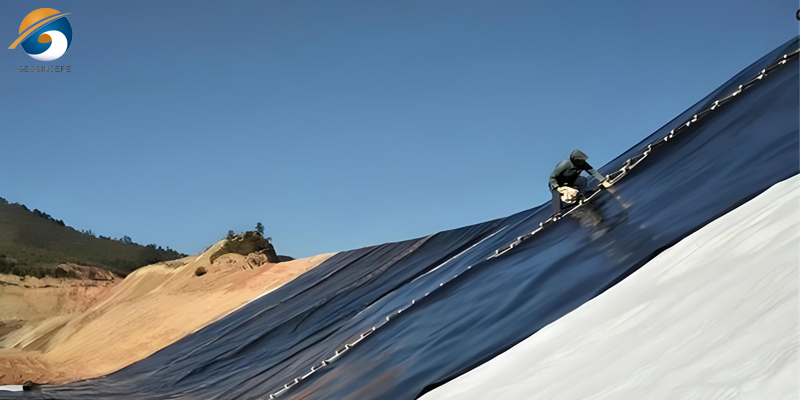How to Maintain the Service Life of Geomembrane?
Proper maintenance of geomembranes is crucial for ensuring their longevity and effectiveness in various applications, such as landfills, ponds, and containment systems. The service life of these materials can be significantly extended through careful attention to installation practices, regular inspections, and proactive maintenance strategies. Factors such as environmental conditions, physical stress, and material quality all play a role in the performance of geomembranes. In this article, we will explore essential practices for maintaining geomembranes, including how to monitor their condition, address potential issues, and implement best practices to maximize their durability. By following these guidelines, you can help ensure that your geomembranes continue to function effectively for many years to come.
1. What Is the Service Life of Geomembrane?
The service life of geomembranes typically ranges from 20 to 50 years, depending on several factors that influence their durability and performance. Key determinants include:
1.1 Material Type: Geomembranes made from high-density polyethylene (HDPE), linear low-density polyethylene (LLDPE), and other quality materials generally exhibit longer lifespans due to their resistance to environmental stresses.
1.2 Environmental Conditions: Exposure to UV radiation, extreme temperatures, and chemical substances can affect the longevity of geomembranes. Locations with harsher conditions may experience a shorter service life.
1.3 Installation Quality: Proper installation is critical for maximizing service life. Adequate site preparation, secure seams, and protection from mechanical damage contribute to the overall durability.
1.4 Physical Stress: Factors such as soil movement, hydraulic pressure, and traffic loads can impact the integrity of geomembranes, potentially reducing their lifespan.
1.5 Maintenance Practices: Regular inspections and timely repairs can help identify and address issues early, prolonging the service life of the geomembrane.
2. What Details Should Be Paid Attention to During Installation to Reduce Damage?
2.1 Site Preparation: Ensure the installation area is clean and free of sharp objects, debris, and vegetation. A smooth, well-compacted surface helps prevent punctures and abrasions.
2.2 Material Handling: Handle geomembranes with care to avoid unnecessary stress or damage. Use appropriate lifting techniques and equipment to prevent tears during transport and installation.
2.3 Proper Alignment: Carefully align the geomembrane during installation to avoid overlaps or misalignments that could lead to weak points or seams that are difficult to secure.
2.4 Seam Integrity: Pay special attention to the quality of seams and joints. Ensure that they are properly welded or sealed according to manufacturer specifications to prevent leaks.
2.5 Temperature Considerations: Be aware of the temperature during installation. Extreme heat or cold can affect the material's flexibility and bonding capabilities. Follow guidelines for temperature ranges during installation.
2.6 Mechanical Protection: If heavy equipment will be used near the geomembrane, consider placing protective materials, such as geotextiles or padding, over the geomembrane to prevent damage.
2.7 Avoid Excessive Tension: When stretching the geomembrane, avoid applying excessive tension that could lead to tears or deformation. It should be installed with enough slack to accommodate thermal expansion and contraction.
2.8 Inspection During Installation: Conduct regular inspections throughout the installation process to identify any potential issues early, allowing for immediate corrective action.
By paying attention to these details during installation, the risk of damage to geomembranes can be significantly reduced, ensuring their effectiveness and longevity in various applications.
3. How to Repair Damaged Geomembrane?
3.1 Assess the Damage: Inspect the area to identify the type and extent of damage (puncture, tear, or seam failure).
3.2 Clean the Area: Remove any debris and contaminants around the damage using water and a mild detergent.
3.3 Select Repair Materials: Choose a patch material that matches the geomembrane type (e.g., HDPE).
3.4 Cut the Patch: Cut a patch larger than the damaged area, ensuring rounded corners to prevent peeling.
3.5 Apply Adhesive: If using adhesive, apply it to both the patch and the damaged area as per manufacturer instructions.
3.6 Position the Patch: Place the patch over the damage, pressing down firmly to eliminate air bubbles.
3.7 Seal the Edges: Seal the edges with additional adhesive or weld them if compatible.
3.8 Allow for Curing: Follow curing time recommendations to ensure proper adhesion.
3.9 Inspect the Repair: After curing, check the patch for security and perform a leak test if possible.
4. Summary
In conclusion, maintaining the service life of geomembranes requires a proactive approach that includes proper installation, regular inspections, and timely repairs. By addressing potential issues before they escalate and ensuring that environmental conditions are monitored, you can significantly extend the durability and effectiveness of geomembranes.By prioritizing these strategies, you can maximize the lifespan of your geomembrane, providing reliable protection and performance for years to come.








